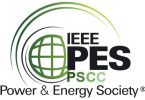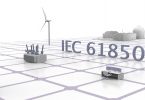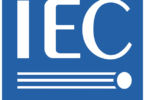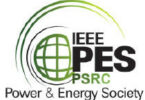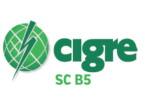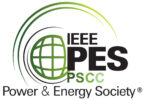by Christoph Brunner, it4power, Switzerland
Although, many peoples have heard about TISSUES, some may not know how exactly the process works. This column will answer some of the relevant questions in a FAQ format.
Do you know what TISSUES are? And I do not mean the paper stuff that you need when you have a cold… As a regular reader of this column, I would assume yes, you have heard about TISSUES. I know many people have heard about it but do not know how exactly it is supposed to work. That is why I thought I can once write a column about TISSUES. And I will do that as FAQ.
When were TISSUES introduced?
TISSUES were introduced by the UCA Users group back in the late nineties to track issues with the UCA documents like CASM and GOMSFE. With the decision to merge the UCA work and the IEC 61850 work, the process was inherited by IEC 61850.
What does TISSUE stand for?
Technical ISSUE. It is a process to report technical issues related to a specification.
Where do I find information about TISSUES?
The TISSUES database can be found under the link iec61850.tissue-db.com, where all the TISSUES related to IEC 61850 are grouped according to the different parts of the standard and their versions. On the overview page for the TISSUES of the different parts, there is also a link to the document describing the TISSUE process.
Is the TISSUE process a formal IEC standardization process?
While the TISSUE process was introduced by UCA, in the meantime the TISSUE database is hosted by IEC. However, it is currently not part of the IEC directives. The TISSUE process as it is used for IEC 61850 is based on an agreement between IEC central office and the working groups dealing with IEC 61850. Within IEC, the so called “document for comment” (DC) are circulated to announce new approved TISSUES and provide an opportunity to the national committees (NC) to comment on those.
Who defines the rules for the TISSUE process?
Initially the rules were defined by UCA. For IEC 61850 TISSUES the first process was defined together with IEC TC57/WG10 around 2005. With the better integration into the IEC environment, about three years ago, the process was redefined within WG10, taking into consideration the experience from past years – mainly the interaction with UCA conformance testing.
What can be entered as a TISSUE?
While the goal from the beginning was to have a solution addressing errors or ambiguities in the standard that may cause interoperability problems (if not solved) with the old process, a lot of TISSUES were handled with suggestions for improvements. With the revision of the process, we put back the focus on issues affecting interoperability. Other issues will not be solved as TISSUES – for which other processes exist within IEC, such as amendments, or a new work item proposal.
Who can enter TISSUES?
In principle, anybody can enter a TISSUE. For obvious reasons, it is required to be a registered user with a valid email address, but registration is free and open to everybody. Typically, it will be individuals that are implementing parts of IEC 61850, that will enter TISSUES.
What is the difference between the task force User Feedback and the TISSUE process?
As mentioned above, the purpose of TISSUES is, to solve issues where devices in the field may not be able to communicate due to errata or ambiguity in the standard that results in conflicting implementation and cannot wait for the regular standardization process. About 10 years ago, a task force “User Feedback” was created within TC57/WG10 which is handling feedback from end users or system integrators. That process is independent from the TISSUE process. UCA is maintaining a database of user feedback issues (redmine.ucaiug.org).
How do users provide input to WG10 about their needs and troubles?
As mentioned above, the users should provide the feedback through the TF user feedback by contacting through the IEC NC an expert that is a member of TC57/WG10. In IEEE PSRC there is also a user feedback TF (H30) which has a liaison with IEC TC57/WG10.
What do the colors mean?
Colors were used in the first version of the TISSUE process to identify a state of a TISSUE. With the revision, we have introduced more TISSUE states – colors are not relevant anymore. The state diagram of the process is explained in the document linked at the website.
The key steps in the process are, that first, when a TISSUE has been entered, the relevance of the TISSUE is discussed. As a conclusion, it is either considered as relevant to be solved, or it is closed and categorized as either not applicable, editorial, or a future improvement. Editorial issues will be integrated at the next opportunity; future improvement will be considered with the next version or Amendment of the standard. When the TISSUE is considered as relevant, a solution will be developed including preparation of conformance test. At the end there is a ballot, and the TISSUE solution becomes accepted.
What happens when a TISSUE solution has been accepted?
When solutions for interoperability TISSUES have been accepted, an official IEC DC will be circulated to the NC announcing the TISSUES that will become effective. If the TISSUE has an impact on a code component, a new release of the code component will be issued. Note that it is possible to bundle TISSUES that become effective.
Biography:

Christoph Brunner is the President of his own independent consulting company it4power LLC based in Switzerland. He has over 25 years of experience with knowledge across several areas within the Utility Industry and of technologies from the Automation Industry. He has worked as a project manager at ABB Switzerland Ltd in the area of Power Technology Products in Zurich / Switzerland where he was responsible for the process close communication architecture of the automation system. He is Convener of WG 10 of the IEC TC57 and is a member of WG 17, 18 and 19 of IEC TC 57. He is member of IEEE-PES and IEEE-SA. He is an IEEE Fellow and is active in several working groups of the IEEE-PSRC and a member of the PSRC main committee and the subcommittee H. He is advisor to the board of the UCA international users’ group.



